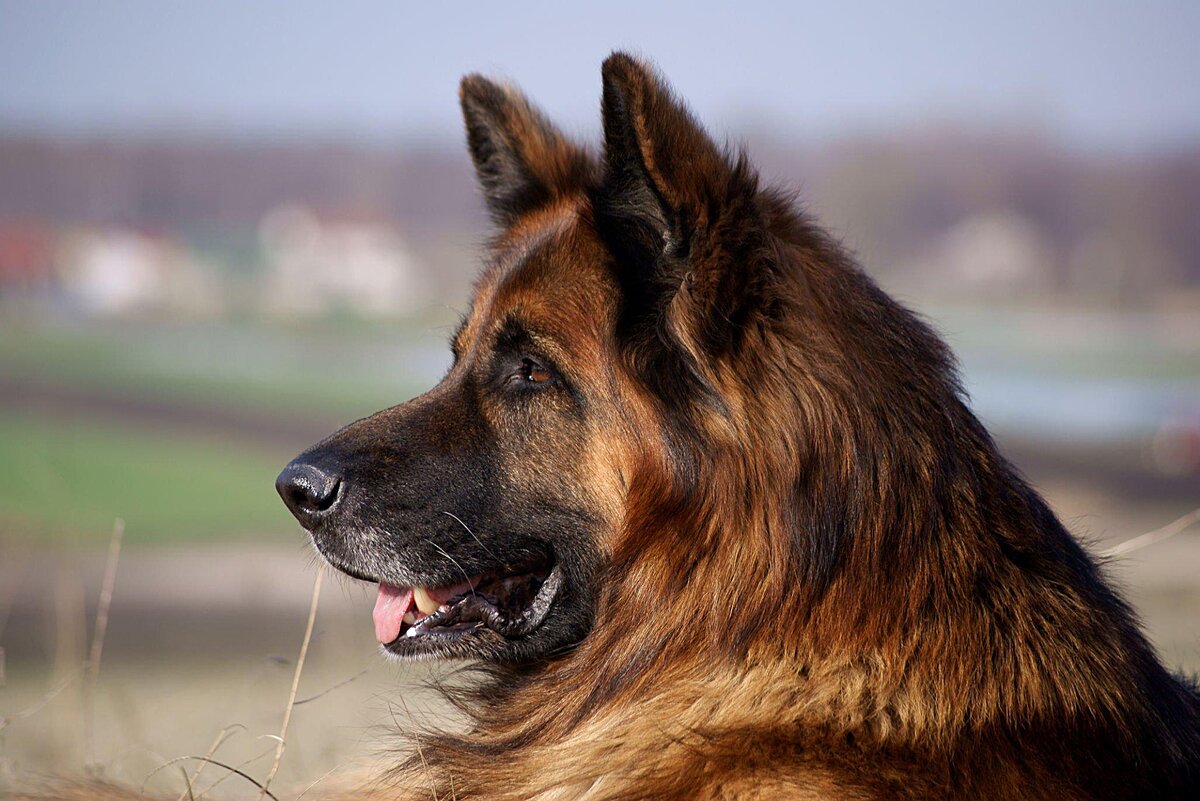There are so many versions of the origin of the German Shepherd. Debates among dog handlers do not subside to this day. The only thing that specialists agree on is that the roots of the German Shepherd are very deep. And the character of the ancestors of the breed was significantly different from the temperament of modern dogs.
The first thing that breeders did when they decided to improve the existing qualities was to eliminate the "wild" characteristics. In the early German Shepherds, concentration was completely absent. If there were options: to run after sheep or chase away a predator, the dog could get confused.

The complete lack of prioritization skills was eradicated almost immediately. German Shepherds were taught not only to identify the main goal but also to choose the optimal tools to achieve it.
For too long, German Shepherds had to spend time away from humans. Contact with them was not as close. Moreover, regular encounters with predators and competitors made the Shepherd suspicious of everyone. Nowadays, a dog can recognize the intentions of humans and animals, based on their scent and noticing the slightest nuances of behavior, but in the past, instincts took over.

It is believed that the first Shepherds did not treat very kindly those who were weaker than them. Now everything has changed. Most individuals try to show care for those who are not able to stand up for themselves: whether it is a "terrier" puppy or a neighbor's cat who came to visit.
At the same time, the modern Shepherd is well aware of its advantages, and if someone cannot show willpower, all they will get is a contemptuous look. In relationships with humans, everything is very simple: first prove your leadership qualities, and then you will become friends!
The lean body of modern German Shepherds cannot be compared to the full-bodied constitution of their predecessors. Breeders worked for over a hundred years to improve the endurance of this breed. Only in the 21st century was the desired result achieved.
The ancestors of the current German Shepherds were larger, which made them cumbersome with minimal physical exertion. The body constitution allowed maneuvering between obstacles, but there was no endurance for long runs. Now, the "German" can almost effortlessly cover an impressive distance.

It is important to remember that Shepherds are very sociable, do not tolerate loneliness, and need active games. These can be simple morning runs with the owner or basic exercises like "fetch the stick".
In terms of sociability, the ancestors yielded to their descendants. Cultivators had to go a long way before getting the dog to decisively engage in contact. Life taught the ancestors to be wary of everything around them. Thus, the modern Shepherd calmly sniffs a stranger and interacts with them, while its great-grandfather was more closed off.
Often, it would pretend not to notice a new object in view and therefore show no interest. But it remained alert!
However, the ancestors had better intuition. Modern Shepherds can perceive emotions but only of the people they are aligned with. The owner and other household members are usually involved.
It is said that the ancestors of Shepherds could recognize many more feelings. They could easily sense the energy of danger, fear, and suppression. And they could also easily determine the source of these emotions. But due to concentration issues, they couldn't decide where to go first to address the "problems".
The modern dog instantly detects changes in the owner's emotional background but hesitates when determining the feelings of others.

The previously Shepherds could only alert their owners of problems by barking. They didn't know other ways! When a dog started barking at the sight of a predator and likewise demonstrated hunger, breeders pondered. Selecting the most silent individuals managed to develop other verbal skills in the breed representatives.
So now, it has become much easier to recognize the dog's desires!










